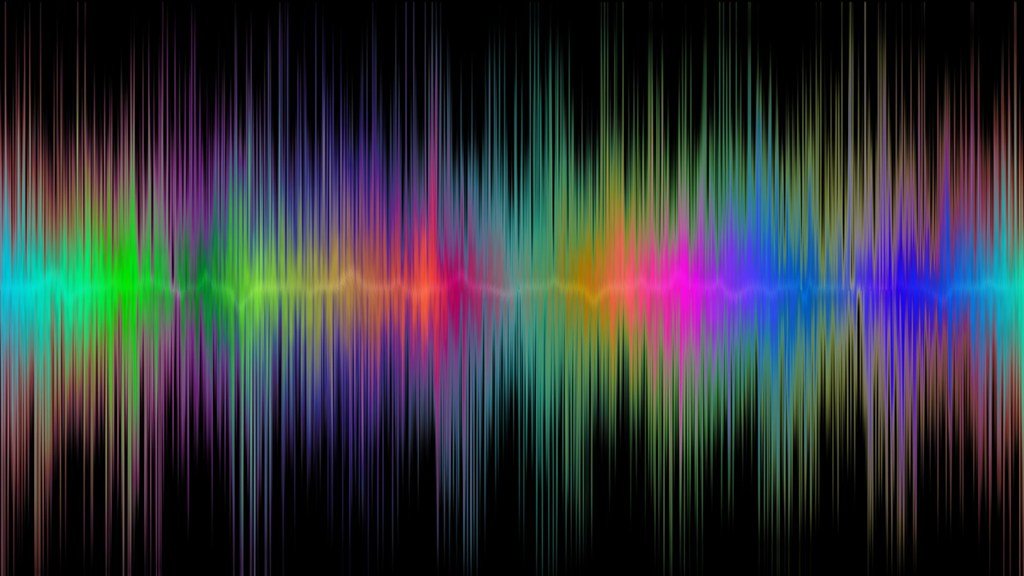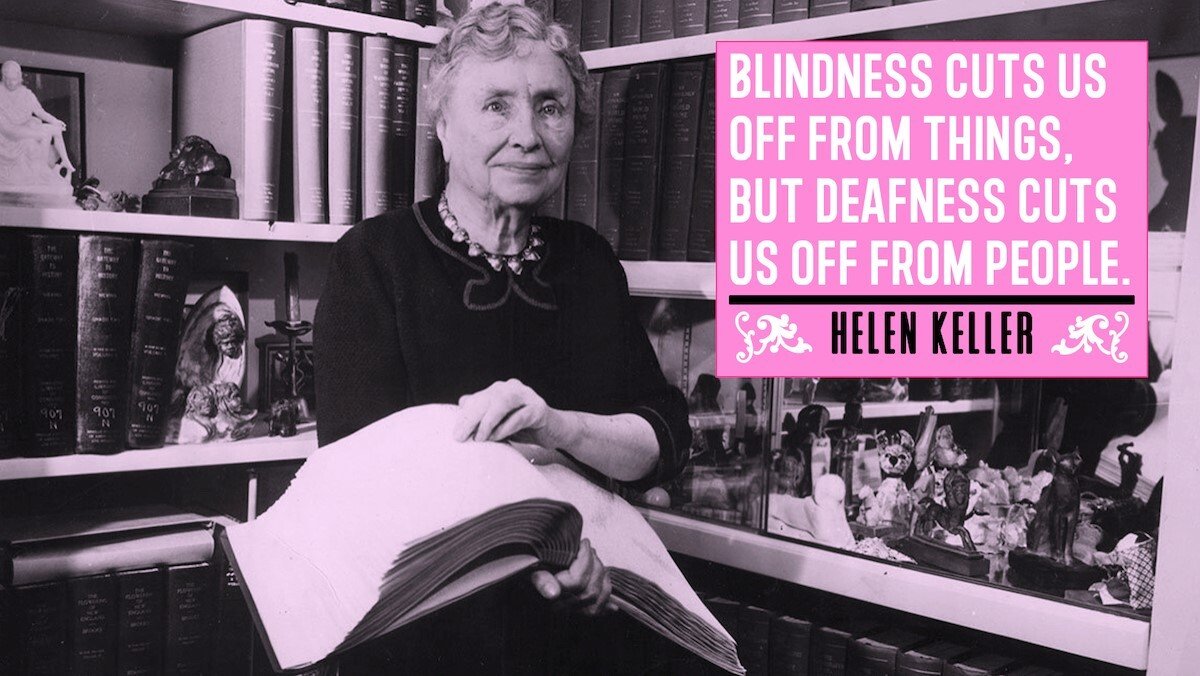
I took a mobile phone call yesterday. I was out walking the dog, when I heard a ringing sound in my ear, reached up and pressed the button and heard a voice – loud and clear.
“Is that Sarah?”
“Yes, hello.”
I’m deaf, but I could talk to the caller through my new Bluetooth enabled ‘hands-free’ hearing aids. Wow! Loud and clear, I could hear this voice as if she were standing next to me. Isn’t technology amazing!
Around one in eight people in this country have some degree of hearing loss, making it the most common disability – although it is remarkably little understood. Helen Keller, who was deaf and blind and developed the finger-speaking language now used to communicate in such situations, reportedly said that “Blindness cuts us off from things, but deafness cuts us off from people”. So yes, wow! I could communicate again, in a way that is almost as natural as breathing to everyone else around me.

It was the first mobile phone call I’d made for around ten years, since I lost most of the hearing in my left ear. I’d been severely deaf in my right ear for a decade or so before that, but had grown used to turning my ‘good ear’ towards the speaker and could hear in most situations that way. I was beginning to use a hearing aid, although it didn’t seem as essential then as it is now. I managed phone calls by turning on the speakerphone and holding it next to my ear. My television volume was always very high, but I could hear it.
Then, one night I was woken by a really loud ‘white noise’ sound at about three in the morning. Anyone old enough to remember analogue television sets, which switched off at the end of programmes, may have experienced it – the loud electrical buzzing noise that woke you suddenly, if you’d fallen asleep in the chair without switching off the TV. Except, I was in bed and the television in my bedroom was switched off. A really loud noise. I went downstairs – lounge television off. No sign of a source for the buzzing. Kitchen, bathroom, spare bedroom, all clear. Gradually, sleepily, I realised that whichever room I went into, the noise level was unchanged. It was not coming from a faulty electrical item, it was coming from me. It was tinnitus.
The system at my GP practice is common: in an emergency, ring at 8am for an urgent appointment. It might take 15 or 20 attempts to get through and you might get to see your own doctor, more often a different one on duty, but they’ll usually fit you in somehow. Except I could only hear this very loud noise and there was no way I could a make a phone call. I went to the surgery at 8am, instead. I could barely make out what the receptionist was saying above the noise in my head, but she clearly disapproved that I hadn’t followed the system. She tried to say I should have phoned, but I couldn’t hear what she was saying. When I asked her to write it down, she understood and fitted me in to see the duty doctor.
I embarked on a very frustrating period of medical appointments, before eventually being diagnosed with an inner ear complaint called cochlear hydrops, which is a form of Ménière’s disease. This previously undiagnosed disorder had probably been responsible for intermittent dizzy spells that had dogged me for years and may have caused the loss of hearing in my right ear. “It tends to burn itself out’” said the specialist. “Unfortunately, it burns out your hearing with it.” I was left with moderate to severe hearing loss in one ear and severe to profound loss in what had previously been my ‘good ear’. In practice, that means that when I take out my hearing aids, it’s like switching off the world – I can hear next to nothing.
There was some consolation. First, there was medication available, which would (hopefully) reduce the terrifying possibility of losing what little hearing I had left. Second, the tinnitus subsided gradually on its own, until it was a quieter, more manageable sound. It became a familiar part of my night-time routine, as it occurred (and still does, intermittently) when I removed my hearing aids. And, mercifully, hearing aids are technologically so much more advanced than they used to be.
Unfortunately, it isn’t like putting on a pair of glasses, which will usually correct a visual problem instantly. Instead, hearing aids take a lot of getting used to and they can’t replace lost hearing. They act to aid a person with impaired hearing, rather than to replace the hearing, a bit like a wheelchair can aid a person with impaired mobility, but not reproduce the ability to walk. The solid earpieces, necessary for severe hearing loss, have to fit very securely and have been likened to wearing tight-fitting shoes. It’s a struggle to insert them at first, until you get used to putting them in at the correct angle – I had weeks of sore, bleeding ears, until I mastered the art. By the end of the day, they can itch and rub, and it’s a relief to take them out. Feedback – irritatingly loud whistling and beeping noises – often arise if the aid is touched, for instance by a snugly fitting hat or a pillow, if lying down. I went to a local lip-reading class, which helped enormously with understanding the shape of sounds, as well coping with the many idiosyncrasies of living with impaired hearing and using aids. Coping with mask-wearers is a whole new problem, as they obscure lips!
Hearing aids work by effectively turning up the volume and channelling the sounds close to the ear drum, so as to make the most of whatever hearing ability is left. Normal human hearing is selective, so the noise of the kettle boiling gets pushed into the background if you want to listen to someone chatting as you make the tea. Hearing aids tend to treat both sounds, indeed all noises, as equally important. If several people are speaking at once (think of a crowded restaurant, where several conversations happen all around), they’ll all be amplified. Background noises like coffee machines, passing traffic, noisy footsteps soon all merge into one loud cacophony. Modern aids are getting better at automatically prioritising human speech over other sounds, and at blocking out noises coming from the side or behind, to concentrate on the conversation facing the wearer of the hearing aid. This is still developing technology and loud, busy environments are exhausting, with undifferentiated noise all around. Fortunately, hearing aids can be turned off, which has been a saviour for me on some late night, noisy train journeys!
Now, I have a new pair of hearing aids. State of the art technology – and they are amazing! The microphone is in the end of the earpiece, which is new, and means the aid behind my ear (where it usually sits) seems tiny in comparison with the old ones. They are rechargeable, so no fiddling with small batteries – although the charger is pretty small and fiddly for arthritic fingers. I am having to get accustomed to using hearing aids all over again, a bit like mastering an upgrade on a computer or a new phone. Ah, but the blessing of being able to make a mobile phone call! They’re not sure about the landline yet, which my old hearing aids managed, but we’re working on that. Using Bluetooth, these aids link automatically with my mobile, my landline, my television and up to eight electronic devices, like iPads, in total. When they’re linked, everything else is blanked out, so chatting whilst watching a programme, Gogglebox-style, is still out. And I am still deaf. I still need to see your face to hear what you’re saying, but I will be able to wear a warm woolly hat this winter, and I will be able to take phone calls whilst I’m out.




